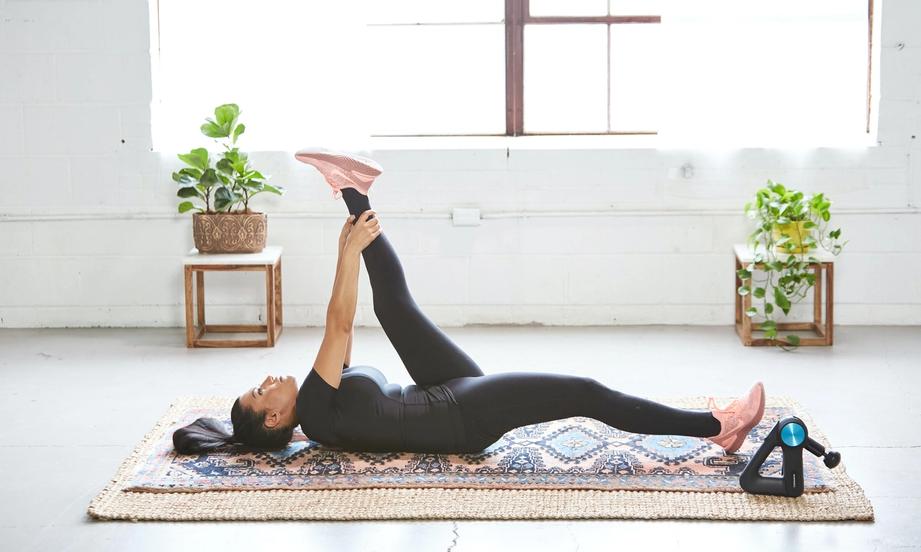Lower back pain affects around 7.5% of the world’s population. Ranging from mild to severe, from acute to chronic, it’s one of the most common reasons for missing a day at the office. Even when barely noticeable, lower back pain can still be very frustrating, and when it’s intense and chronic, it tends to significantly lower your quality of life.
However, lower back pain is often a result of tight hips – a condition caused by our lifestyle choices or bad posture. If you’re suffering from lower back pain, your aches are likely the consequence of a fixable problem.
Here’s how your tight hips are contributing to your back pain and how to fix that.
Where do tight hips come from?
Tight hips are pretty common. In many cases, hip tightness affects the alignment of your pelvis and your spine, causing mild to severe low back pain.
Hip tightness comes from two prominent groups of hip muscles connected to the spine. First, you have hip flexors. These muscles are situated up front, connecting your hips with your thighs. Hip flexors play a crucial role – they help you bend your legs.
The hamstrings are the second group of muscles responsible for tight hips. They are located in the same position as hip flexors, only in the back of your thighs.
What is the cause of hip tightness?
More often than not, tight hip muscles are caused by lifestyle factors – sedentary jobs, intense workouts, low-quality mattresses, or bad posture. You might experience hip tightness if you are a regular runner or if you are improperly exercising at home, without the correct form, for instance.
Hip flexor injuries can cause lower back pain, too.
Another frequent cause of tight hips is a structural imbalance that creates a tipped pelvis – scoliosis is a prime example of that. Poor core strength and other postural issues can also contribute to hip tightness and age-related changes such as arthritis.
Hip flexor stretches to relieve tightness
When tight hips are a consequence of poor lifestyle choices, it’s easy to prevent them by developing healthier habits. However, sometimes, it’s more complicated than that. When hip tightness is caused by a minor injury, spine curvature, or arthritis, you must treat the core problem. In this case, one of the most effective solutions for decreasing low back pain is physical exercise.
Below, you’ll find four excellent stretches for flexor tightness that will, by extension, eliminate or at least ease your back pain. Remember to be gentle with your body. Warm up your muscles, and don’t push past your pain limit. That can make the pain worse.
Kneeling hip flexor stretch
First, kneel on a yoga mat with both knees. Next, put one of your feet forward to form a 90-degree angle between your legs. Place your hands on the upright knee and start pushing gently forward until you feel both the flexors and the hamstrings stretching.
Seated butterfly
This exercise is a classic, so you should remember it from your school days. To do a seated butterfly:
- Sit down on the mat and bring both feet together;
- Use your arms to gently drive your knees down to the floor;
- Hold for 30 seconds, then release.
You should release it a bit earlier if it starts to get uncomfortable.
90/90 stretch
Sit on the floor with your knees slightly bent. Make right angles with both your legs resting on the ground. The front thigh should extend in front of the chest, while the back thigh should extend at the side of your body.
Make your shoulders square over your front hip and place both arms down to the ground. Now gently lean forward with your body but keep your back straight and your shoulders even. Hold the position for 60 seconds, then change sides.
Supine stretch
Lie flat on the back and bend your knees with your feet on the ground. Wrap a towel around your thigh and squeeze your stomach. Now slowly pull the towel up and let it lift your leg for as long as you’re comfortable. You can keep the leg straight or slightly bent. Hold for 30 to 60 seconds. Then, switch legs.
Conclusion
Can hip flexors cause back pain? Absolutely, and they often do.
When you have tight flexors and hips, low back pain is usually accompanied by pain and inflexibility in hips and/or thighs. Hip and flexor tightness can result from a sedentary lifestyle, intense physical activity, spine and posture problems, injury, or arthritis.
Luckily, hip flexor stretches can help most people loosen up tight hip muscles and eradicate back pain. If stretching doesn’t work for you (remember, you must give it some time), consider talking to a healthcare professional who will likely prescribe physical therapy.
